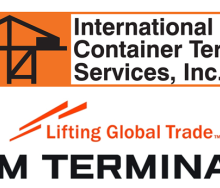A variety of consumers – from fitness fanatics to aspiring Olympic athletes - have trebled trade in sports goods since 1996.
According to the World Trade Organization (WTO), annual imports reached nearly $64 billion in 2022. Over this period, China has emerged as the leading exporter, while the European Union and the United States have become major importers.
A WTO blog states that over the past three decades, the global market for sports goods has seen remarkable growth. “Between 1996 and 2022, annual imports surged from $15bn to almost $64bn.
“This significant increase not only reflects the global trend of increased trade but also changes in consumer behaviour.”
The global landscape of sports goods imports is dominated by the Americas and Europe, which together account for nearly three-quarters of total imports. The Americas lead with $26.2bn, but face a relatively high average tariff rate of 19.9%. Europe follows with $19.8bn and a lower tariff rate of 9.9%. Asia ranks third, at $15bn, benefiting from the lowest tariff rate of 7.2%.
The 1990s saw the beginning of a burgeoning interest in health and fitness. This led to a period of accelerated growth in global imports of sports products from the mid-2000s to the mid-2010s.
Imports of the products grew steadily from 1996 to 2022, with two exceptions. The authors of the blog point out that a significant contraction occurred in 2009, possibly as a result of the 2008 global financial crisis, while 2021 saw explosive growth as part of the initial recovery from the Covid-19 pandemic. They believe that Government-imposed restrictions during the pandemic may have led to this unprecedented demand for sports equipment as consumers worldwide became more health conscious at a time when sports centres were reopened.
The highest increases occurred in water sports (+73%), golf (+54%), articles and equipment (+46%), and racquet sports (+36%). The growth in the articles and equipment category is particularly impressive, as it increased between 2019 and 2020, a period when most other categories saw a decline in imports, according to the WTO.
Significant reductions in tariffs over the past three decades have played a role in making sports products more accessible and affordable.













